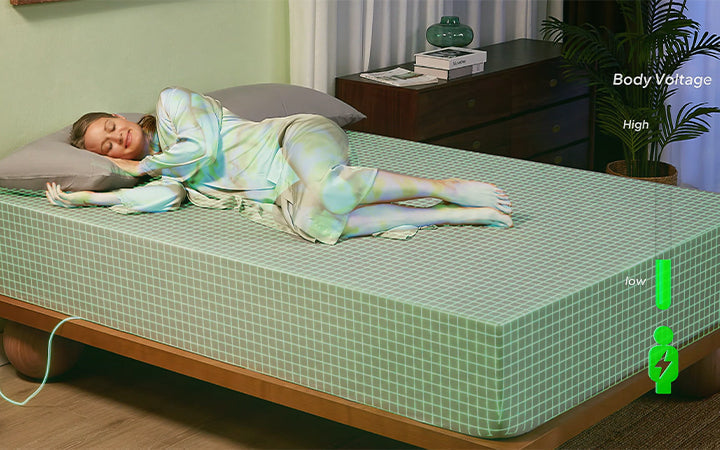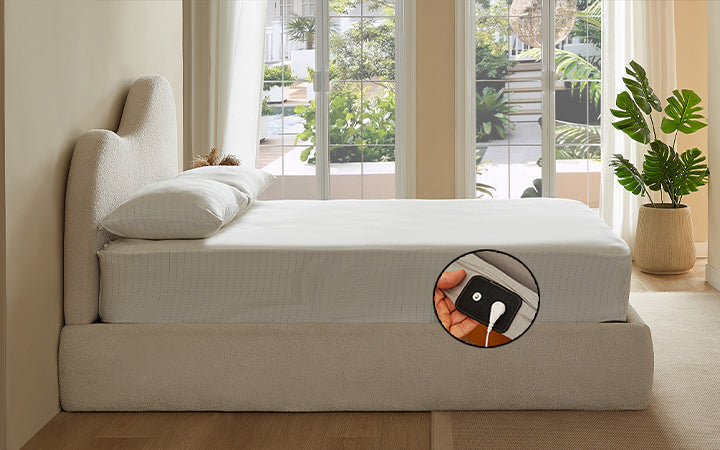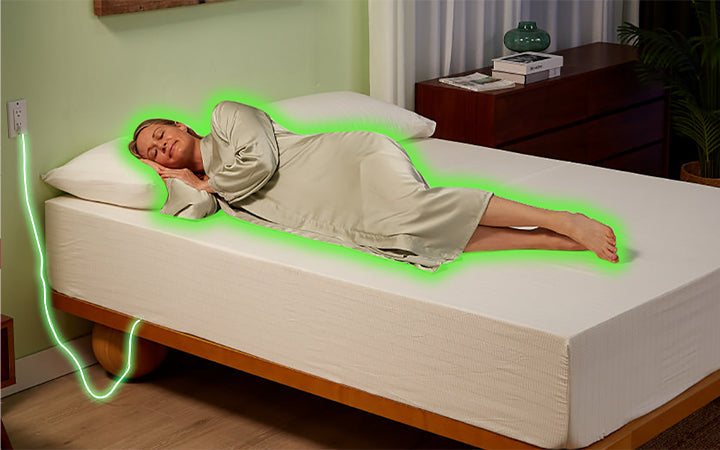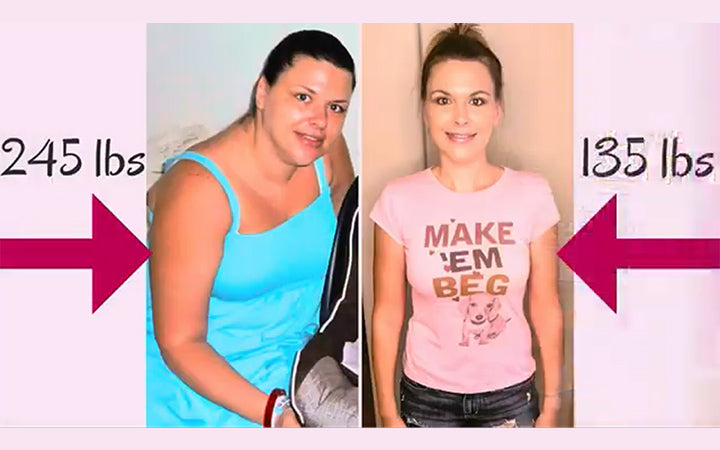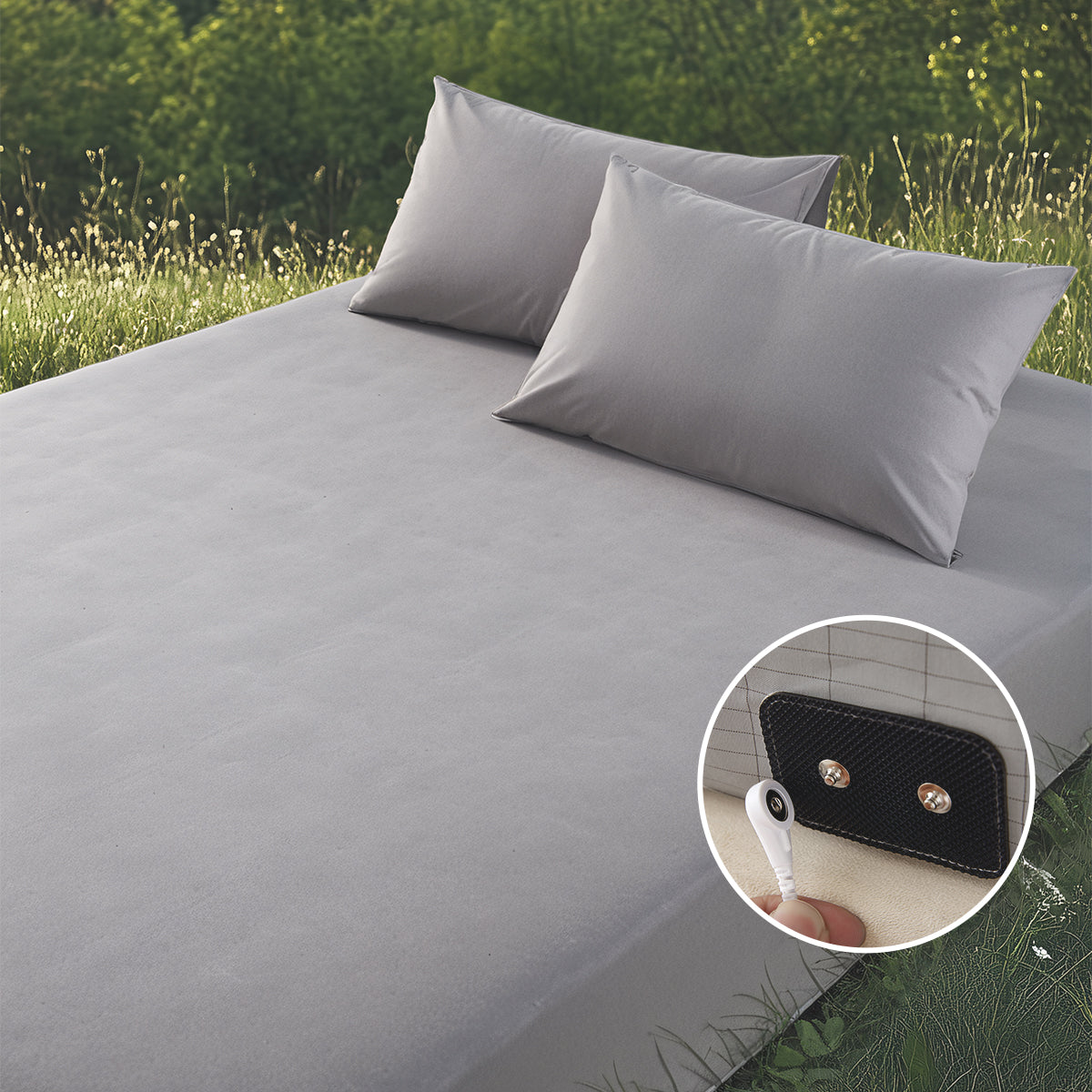Grounding Sheets vs. Regular Grounding: Which Method Maximizes Wellness Results?
Modern life often means we're not in direct contact with the Earth—think shoes and indoor living. But there's a practice called 'grounding' (or 'earthing') that focuses on re-establishing this physical link to the planet's subtle energy. We'll look at two common approaches: traditional direct contact with natural surfaces, and indoor grounding sheets. Our goal is to compare them for their potential wellness benefits, practicality, and how consistently they can be used.

What Exactly is Grounding?
The basic idea of grounding is direct physical contact between your body and the Earth.
- The Earth's Natural Charge: The Earth has a natural negative electrical charge, meaning it has a large supply of free electrons.
- Modern Disconnection: Our daily routines, from the shoes we wear to the buildings we live and work in, often separate us from this direct contact.
- The Theory of Reconnection: Grounding suggests that by re-establishing this physical link, our bodies can take in these free electrons. This process is thought to help neutralize free radicals (which are linked to cell damage), potentially reduce inflammation, and help stabilize our body's internal rhythms.

Traditional Grounding: Direct Contact with Nature
This is grounding in its original and most straightforward form—your body making direct, physical contact with the Earth's surface.
Simple Ways to Get Grounded Outdoors:
- Go Barefoot: Walk on natural, conductive surfaces like grass, soil, sand, or even unsealed concrete or brick.
- Sit or Lie Down: Rest directly on the ground to maximize contact.
- Immerse in Nature: Swim in oceans, lakes, or rivers.
What People Often Experience:
Those who practice direct grounding frequently report a variety of wellness benefits, such as reduced inflammation and pain, better sleep, and improved mood or lower stress, potentially due to more stable cortisol rhythms. While individual accounts are compelling, the scientific validation for all reported effects, including potential improvements in circulation, wound healing, and muscle recovery, can vary.
The 4 Natural Advantages:
- Completely Free: It costs nothing to connect with the Earth.
- Widely Accessible: Possible in many parks, gardens, beaches, and other natural outdoor settings.
- More Than Just Grounding: You also get the benefits of fresh air, potential sunlight exposure (for Vitamin D), and the positive mental impact of being in nature.
- Full-Body Contact: It's easy to achieve a large area of skin contact with the earth.
5 Practical Considerations & Hurdles:
- Weather Dependent: Not always feasible in cold, wet, or extremely hot conditions.
- Significant Time Demands: Busy work schedules and daily responsibilities make it difficult to consistently dedicate time for outdoor grounding sessions.
- Outdoor Hazards: Be mindful of potential risks like sharp objects, pollutants, insects, or pesticides.
- Limited Accessibility: Can be difficult for those in dense urban areas, individuals with limited mobility, or during certain times of the year.
- Routine Disruption: Maintaining a daily routine, especially for extended periods, can be tough.
This original method of grounding appeals to many for its simplicity and profound connection to the natural world. An individual's success with this approach often aligns with their lifestyle, accessible natural environments, and dedication to the practice.

Indoor Grounding: The Role of Grounding Sheets
When regular outdoor grounding proves challenging, an array of indoor products—such as grounding sheets, mats, patches, and bands—offers a practical alternative. These are designed to help you connect with the Earth's energy from the comfort of your home or office.
How These Indoor Tools Work:
Crafted with conductive materials like silver or carbon fibers, these products establish a connection to the Earth typically in one of two ways:
- Using a Grounded Outlet: They plug into the ground port of a properly wired and grounded electrical outlet, tapping into your home's existing grounding system.
- Using an External Grounding Rod: Alternatively, they can connect to a dedicated metal rod placed directly into the soil outside your home. The core idea is to simulate the body's direct contact with the Earth, even while you're indoors.
Reported Wellness Effects:
The wellness benefits reported by users of indoor grounding products generally mirror those associated with direct outdoor grounding. This is because the fundamental principle—the transfer of the Earth's free electrons to the body—is identical. Notably, many scientific investigations into grounding employ these indoor systems because they offer more controlled and consistent conditions for research.
4 Key Advantages of Indoor Grounding:
- Everyday Convenience: Easily use them inside your home or office, at any time of day or night, and in any weather.
- Consistent and Extended Contact: They allow for many hours of uninterrupted grounding, a significant advantage if used during sleep (often 6-8+ hours). This prolonged exposure is thought to be important for certain benefits.
- Targeted Application Options: Specialized patches can be applied directly to specific areas of the body where you might be experiencing discomfort.
- Accessibility for Nearly Everyone: These products provide a valuable grounding option for almost anyone, including individuals who have difficulty getting outdoors.
3 Factors to Evaluate with Indoor Grounding Products:
- The Initial Financial Investment: Be aware that these products come with an upfront purchase price. You'll want to weigh this cost against the potential benefits and your personal budget.
- Absolute Necessity of Proper Electrical Grounding: For safety and effectiveness, any electrical outlet used must be correctly wired and grounded. It is crucial to test your outlets before using these products. Faulty wiring can introduce risks, although quality products usually incorporate safety features like built-in resistors.
- Variability in Product Quality and Lifespan: The market offers a range of products that can differ significantly in their construction, conductive materials, and overall durability. Researching and selecting items from reputable brands is important to ensure you receive an effective and lasting product.
These indoor solutions bring the potential for consistent grounding into modern lifestyles with considerable ease. Grounding sheets offer benefits that become noticeable after regular use. Careful selection of quality products and diligent attention to electrical safety and product care are essential for a positive and effective experience.

Grounding Sheets vs. Regular Grounding: Which Approach is Better for Wellness?
Both outdoor grounding and indoor sheets aim to boost well-being by reconnecting us to the Earth's energy. The "better" choice for your wellness often depends on your specific goals, lifestyle, and priorities. Here’s a comparison based on key wellness factors:
For Sustained Therapeutic Effects: The Power of Duration
For lasting physiological benefits like better sleep or reduced inflammation, grounding sheets often excel due to prolonged exposure. Grounding for 6-8+ hours nightly during sleep allows sustained electron absorption and its associated benefits. While direct outdoor contact can be potent short-term, matching the cumulative impact of sheets usually requires significant, consistent time outdoors, which can be challenging.
For Ease of Daily Integration and Long-Term Adherence
Practicality is key for consistent use and thus, for long-term wellness. Grounding sheets are generally easier to integrate into daily life, especially during sleep, requiring minimal effort after initial setup. Outdoor grounding, however, needs more planning, suitable environments, and is subject to weather or schedule changes, making daily adherence harder for many and potentially limiting cumulative benefits.
For the Nature of the Wellness Boost: Targeted Bioelectrical vs. Holistic Benefits
The "better" method also depends on the desired type of wellness benefits:
- Outdoor grounding offers a holistic experience: the bioelectrical connection plus the mental, sensory, and physiological benefits of being in nature (fresh air, sunlight, natural calm).
- Grounding sheets focus on delivering consistent, targeted bioelectrical benefits, ideal for specific physiological improvements that may require extended periods of electron transfer. For nature's full rejuvenating effect, outdoor grounding is superior. For targeted, long-duration bioelectrical input, sheets offer a more direct approach.
For Ensuring a Safe Path to Wellness
Safety is vital for any grounding method to truly benefit wellness. The necessary precautions differ:
- Outdoor grounding: Primarily involves awareness and avoidance of physical hazards like sharp objects, pollutants, or insects.
- Grounding sheets: Electrical safety is paramount. You must ensure your home's outlets are properly grounded and use quality products with built-in safety features (e.g., current-limiting resistors) to protect against issues from faulty wiring. Diligent attention to these respective safety needs is essential for positive wellness outcomes with either method.

Take Steps Toward Your Grounded Well-being!
There isn't a one "best" technique to practice grounding; it actually depends on your lifestyle, where you live, your health goals, and what you enjoy. But for the kind of steady, long-term grounding many feel is required for major benefits—especially for sleep and continuous conditions—grounding sheets frequently offer a more sensible path. Great to incorporate whenever you can, direct outdoor grounding gives its own special, useful advantages.
Not sure where to start? → Try this grounding guide for beginners.

